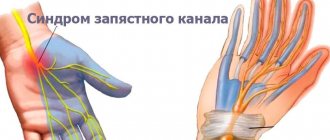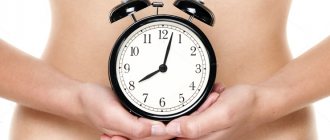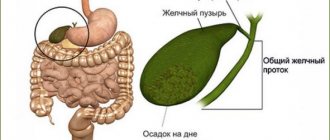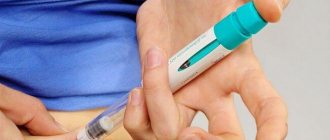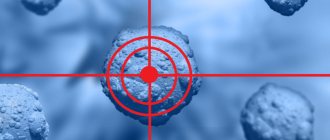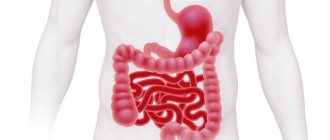What it is?
Menopausal syndrome in women can manifest itself in more than 60% of the fair half of humanity who have entered the threshold of menopausal changes. It represents pathological changes in the entire female body associated with hormonal changes and a deficient level of production of female sex hormones. It is accompanied by disturbances in the adaptogenic, psychoemotional, cardiovascular, endocrine and neurovegetative state of the body with varying duration and severity.
Sometimes climacteric syndrome, or as it is also called menopause syndrome, can develop as a result of surgical intervention in the female reproductive system.
The life position of many representatives at the time of these changes in the body is still positive. And despite the fact that many peaks of life’s journey have already been conquered, there is still something to learn and something to strive for. That is why the first manifestations of menopause in most cases seem like something terrible and frightening, signifying an approaching senile period. And the appearance of wrinkles, frequent depression and stress contribute to a decrease in vitality.
But, do not forget that the course of menopause is an inevitable and natural process that occurs in the body of every woman and lasts from 2 to 5-6 years. Therefore, in order to endure it more gently, while maintaining your optimism in life, you need to be well-informed, have a correct attitude towards these changes, and, following the recommendations of qualified specialists, take the necessary measures to improve your general condition.
Pathogenesis and contributing factors
Menopausal syndrome occurs as a consequence of age-related changes. The hypothalamus-pituitary center is primarily responsible for the onset of menopause. It is here that the first changes begin, which entail the extinction of reproductive function.
During puberty, estradiol plays a major role in a woman’s body. It is this hormone that is responsible for the possibility of childbearing and maintaining the normal functioning of all organs and systems. At around the age of 45, the production of this hormone begins to decline and is gradually replaced by estrone, which is synthesized by the adrenal cortex and adipose tissue. The effect of estrone on a woman’s body is noticeably weaker than the effect of estradiol, which causes the development of symptoms of menopausal syndrome.
A decrease in estrodiol production occurs as a result of involutional processes in the structures of the hypothalamus. This organ ceases to adequately perceive the concentration of sex hormones and begins increased production of gonadotropic hormones, which leads to a malfunction of the ovaries. It is a consistently high level of FSH that causes the cessation of ovulation, and therefore the impossibility of conception. As a result of all these changes, the ovaries gradually atrophy, their glands are replaced by connective tissue, and they can no longer synthesize sex hormones.
However, in a healthy female body, without the presence of chronic diseases and the influence of negative factors, menopause goes smoothly, the tasks of estradiol are partially taken over by estrones, thereby reducing the negative manifestations of menopause. There are about 20% of such women among patients and they do not experience severe menopausal syndrome. The following factors contribute to the occurrence of severe age-related changes:
- Hard physical labor;
- Frequent stress;
- Endocrine diseases;
- Pathologies of the central nervous system;
- Gynecological diseases throughout life;
- Surgical interventions;
- Having excess weight;
- Having bad habits.
Important! Even with suspicious heredity, you can avoid serious menopausal disorders simply by eliminating negative factors from your life.
Symptoms of menopausal syndrome
The decline of the reproductive functionality of the female body often causes certain symptoms that characterize the onset of menopause. Or, as it is also called, pathological menopause, which is more pronounced in women with emotional imbalance, chronic pathological changes in the body and frequent stress.
The pathological course of menopause is mainly caused by fluctuations in hormonal levels and is the result of age-related changes in some parts of the hypothalamus. It has been established that all injuries received, diseases suffered, surgical interventions and stressful situations strictly affect the depletion of health resources. Therefore, the onset of age-related changes is only one of the triggers that cause pathological menopause.
In the development of menopause, the following forms are distinguished, which determine the severity of the menopausal syndrome:
- light;
- average;
- heavy;
- atypical.
Let's consider the symptoms of each of the presented forms of development of the menopausal period.
Symptoms of mild menopause
A mild form of the menopausal period, or the so-called typical form, is accompanied by the manifestation of symptoms such as:
- Hot flashes.
- The occurrence of headaches accompanied by frequent dizziness.
- Increased functionality of the sweat glands with profuse sweat production.
- Psycho-emotional imbalance.
- Violation of healthy sleep patterns with frequent insomnia, which manifests itself during the first two to three years of menopause.
This form of the menopausal period is characterized by a small number of hot flashes: up to 8-9 hot flashes can occur in 24 hours, and the woman retains full working capacity.
Symptoms of severe menopause
Severe forms of menopause in most cases occur against the background of a hypoestrogenic type of changes in the body, characterized by a sudden cessation of menstrual functionality. It differs in the speed of stopping the functioning of the ovaries from the average and mild form of menopause by three to four times.
Moreover, severe menopause can occur against the background of the development of vasovegetative manifestations of menopausal syndrome. Among them, cardiovascular diseases such as hypertension and atherosclerosis are the most intense.
The premenopausal period of a severe form of its development may be accompanied by symptoms such as:
- frequent attacks of fever;
- pain in the head and heart;
- insomnia;
- increased general excitability of the body, characterized by psycho-emotional instability (increased tearfulness, irritability, apathy and aggressiveness).
These manifestations can occur not only in the premenopausal period, but also several years after the onset of menopause.
With the onset of severe menopause, the following manifestations may join existing symptoms:
- Noises in the ears.
- Decreased ability to remember the smallest details.
- Increased intensity of headaches.
Manifestations of atypical form
Symptoms of the atypical form of menopausal syndrome mainly appear in women slightly over 30 years of age, along with the onset of the early stages of menopause.
Its manifestation can sometimes begin with the development of diabetes mellitus and other pathologies of the vasovegetative systems of the body. This pathology of menopause may be accompanied by a tendency to allergic manifestations, disturbances in the body's thermoregulation processes, visual hallucinations, nystagmus and the development of vegetative polyneuritis.
When early menopause is diagnosed, active excitation of the subcortical diencephalic structure of the brain is observed with the formation of free adrenaline particles and a high content of acetylcholines. Attacks of flushing in women with the development of this form of menopausal syndrome are surprisingly extremely rare: only a couple of such manifestations may occur per day. And this is with the development of a high degree of severity of the remaining symptoms.
This form of menopause occurs in 50% of cases in young women with the onset of early menopause.
Symptoms
In men, the clinical picture of this process occurs in a mild form:
- decreased sex drive;
- depressed mood;
- irritability, apathy;
- decreased performance.
The development of this syndrome in women is characterized by a more complex and pronounced clinical picture.
Symptoms of menopause in women
Early symptoms of this process include:
- headache;
- mood swings;
- fever, increased sweating;
- decreased sex drive.
Symptoms of the delayed form are characterized as follows:
- dryness and flaking of the skin;
- pain during sexual intercourse;
- urinary incontinence;
- hair loss;
- the appearance of wrinkles.
The clinical picture of late symptoms will be characterized as follows:
- arterial hypertension;
- tendency to diabetes;
- increasing the concentration of harmful fats in the blood;
- atherosclerosis.
Asthenoneurotic manifestations of menopausal syndrome include:
- apathetic mood;
- irritability, short temper;
- insomnia, sleep disturbance;
- hypersensitivity to provoking factors;
- unstable psycho-emotional background.
In addition, the general clinical picture will include the following symptoms:
- trembling and chills for no apparent reason;
- exacerbation of existing chronic diseases;
- disruption of the cardiovascular system;
- migraine;
- headaches, dizziness;
- frequent hot flashes - from 10 to 20 times a day, depending on the severity of the pathological process.
In their complex manifestation, such signs lead to a significant deterioration in a woman’s quality of life, therefore, already at the initial stage of development of such a pathological process, you need to consult a doctor and begin treatment.
Diagnostic methods
Diagnosis of menopausal syndrome may consist of the following stages:
- Analysis of information on the history of gynecological and hereditary factors in the occurrence of menopause, as well as existing diseases and complaints.
- Analysis of the menstrual functionality of the female body (age at which the first menstruation appeared, their duration and frequency of regularity at the moment. If menstrual function is absent, then information is collected on the date of the last menstruation).
- Conducting a gynecological examination using a two-handed examination of the vaginal cavity, which determines the correct development of the genital organs, their size, area of pain, etc.
- Examination of the mammary glands to identify pathological changes in their structure.
- Examination of the general condition of the body to identify concomitant pathologies that are not related to the reproductive system. As well as assessment of external indicators (condition of skin, hair, nail plates, body weight), measurement of blood pressure, pulsation and assessment of the performance of the cardiovascular system.
- Taking tests to determine the level of hormones in the blood, biopsy, coagulogram and cytology.
- Examination of the mammary glands using mammography, which allows to detect the development of serious pathological changes in the early stages, using X-ray examination.
- Ultrasound examination of organs located in the pelvic area;
- Densitometry is a highly informative method of studying the condition of the skeletal part of the body, in particular the bones of the spinal column, hips and forearms, carried out to identify the likelihood of developing osteoporosis.
Among other things, mature women approaching menopausal changes are recommended to consult with an ophthalmologist, psychoneurologist and endocrinologist.
Hormone therapy
Hormonal therapy is selected individually, based on the results of the patient’s examination.
Also, when selecting a regimen, dosage and duration of treatment, take into account:
- timing of menopause (early, premature, physiological);
- type of menopause (natural or iatrogenic);
- severity of menopausal syndrome;
- severity of urogenital syndrome, severity of osteoporosis.
Indications for the use of hormonal treatment of menopausal syndrome are divided into short-term and long-term. Short-term indications include the treatment of menopausal disorders (hot flashes, sweating, emotional disorders) and mild atrophy of the genitourinary tract mucosa.
Long-term indications for hormone replacement therapy include the prevention of osteoporosis, severe atrophy of the genitourinary tract mucosa, cardiovascular pathologies, and Alzheimer's disease.
Contraindications to the prescription of hormonal treatment for menopausal syndrome are the presence of the following in the patient:
- breast or endometrial cancer (including previous diseases);
- bleeding of unknown etiology;
- untreated hyperplastic processes in the endometrium (HPE);
- venous thromboembolism;
- diseases associated with arterial thrombosis (including previous attacks of angina, heart attack);
- untreated forms of arterial hypertension;
- acute liver diseases;
- cutaneous form of porphyria;
- individual intolerance to prescribed drugs.
Primary hormone replacement therapy is not recommended for patients over sixty-five years of age.
Relative contraindications to the prescription of hormonal drugs include migraine attacks, endometriosis, venous thrombosis, cholelithiasis, epilepsy, hereditary forms of hypertriglyceridemia, and a high risk of developing breast cancer.
For reference. Hormone replacement and hormonal therapy for menopausal syndrome is most effective when prescribed in the first five years after the onset of menopause.
Possible treatments
Treatment of mild menopausal syndrome mainly consists of a properly balanced diet, a rational approach to physical activity, and taking vitamin complexes containing vitamins A and B.
The following procedures may also be prescribed as treatment:
- exercise therapy;
- massotherapy;
- physical therapy;
- acupuncture;
- hydrotherapy;
- aromatherapy using oils that actively affect the psycho-emotional state of a woman and contribute to its normalization.
Tinctures of the following medicinal plants can be used as sedative treatment:
- valerian roots;
- flowers and fruits of hawthorn;
- motherwort herbs.
The effective biological supplement “Relax”, consisting of phytocomponents and helping to improve the general condition of a woman, is also very popular.
In cases with moderate severity of the climacteric syndrome, additional drugs with a tranquilizing and neuroleptic spectrum of effects may be prescribed, among which the most effective are Relium, Etape Razin, Frenolon, Renalarium. And to normalize a normal healthy sleep pattern and relieve feelings of depression and fatigue, the drug Melatonin is prescribed, as well as Enap to restore blood pressure, and sedatives.
In addition, medications such as:
- Klimalanin tablets , which have a blocking effect on the release of free radicals of pathological compounds and help reduce the symptoms of hot flashes and excessive sweating.
- Klimadinon , which belongs to the group of phytoestrogens, contains extracts of cosimifuga racemosa, which contributes to a general reduction in menopausal symptoms.
- Klimafen , containing extracts of clover and hops.
- As well as such drugs as Estrovel , Inoclim , Femiwell and others.
Treatment of pathological severe menopause involves the use of hormone replacement therapy, based on the use of drugs that include natural estrogens, the following types:
- estradiol valerate;
- estriols;
- 17 beta-estradiols;
- conjugated estrogens.
A combined interaction of natural estrogens with gestagens is also used, among which the most popular drugs are:
- Progesterone.
- Utrozhestan.
- Dydrogesterone.
- Norgestrel.
In order for the climacteric syndrome to completely pass, it is necessary to absolutely strictly follow all the instructions of a qualified specialist.
But, one should take into account the fact that with the overall positive dynamics of correction of the menopausal syndrome, the most problematic are disorders of the psycho-emotional state, which are practically not amenable to the influence of medications. Therefore, to mitigate menopause, it is necessary to eliminate as much as possible the likelihood of depressive and stressful situations occurring in the body.
Treatment with non-hormonal drugs
Non-hormonal drugs used to treat menopausal syndrome include:
- special vitamin complexes for women during menopause (reduce the severity of menopausal symptoms and prevent the development of complications of menopausal syndrome);
- antioxidants (coenzyme 10) and omega 3 preparations (reduce the risk of developing atherosclerosis and complications from the cardiovascular system, reduce dry skin and mucous membranes);
- calcium and vitamin D preparations (used to prevent osteoporosis;
- sedatives and sedatives (used for increased anxiety, irritability, sweating, insomnia);
- antidepressants (can be prescribed for severe menopausal syndrome accompanied by depression);
- sleeping pills (used for prolonged insomnia);
- lipid-lowering drugs (used for high levels of cholesterol and triglycerides in the blood);
- antihypertensive drugs (prescribed for the treatment of arterial hypertension);
- phytoestrogens preparations (have an effect similar to natural estrogens, but do not give side effects characteristic of sex hormone preparations).
For reference. Vitamins for the treatment of menopausal syndrome must be balanced and contain B vitamins, vitamin A, E, D, a complex of trace elements and minerals.
Also, many vitamin complexes for women during menopause contain phytoestrogens (soybean, oregano, dong quai, chasteberry, red clover, licorice).
The most popular vitamins for women during menopause include:
- Mense (produced by the Russian pharmaceutical company Vneshtorg Pharma, price for 40 capsules - 435 rubles);
- Famvital (produced by the French pharmaceutical company Bezen Helkea, price for 90 capsules - 2722 rubles);
- Qi-klim (Russian pharmaceutical company Evalar, price for 60 capsules - 327 rubles);
- Lady's formula for strengthening bone tissue (produced by the Canadian pharmaceutical company PharmaMed, price for 60 tablets - 635 rubles);
- Lady's formula Menopause (price for 30 capsules 531 rub.);
- Feminal (produced by the Croatian pharmaceutical company Jadran-Galenski Laboratory JSC, price for 30 capsules - 781 rubles);
- Doppelhertz Active Menopause Forte (German pharmaceutical company Doppelhertz, price for 30 capsules - 683 rubles);
- Femicaps (Finnish pharmaceutical company Hankintatukku, price for 120 capsules - 1724 rubles).
Possible complications
If climacteric syndrome is not treated in a timely manner or if it is treated incorrectly, the following complications and possible consequences of the course of climacteric syndrome may occur:
- Neoplasms of various etiologies in the area of the mammary glands and reproductive system, including cancerous tumors, which pose a huge threat to a woman’s life.
- Urogenital pathological changes characterized by urinary incontinence.
- Increased risk of osteoporosis with a subsequent high likelihood of chronic fractures.
- Increased likelihood of the occurrence and development of atherosclerosis, stroke, thrombosis, diabetes mellitus and ischemia.
- Significant deterioration in the quality and level of life of the fair sex.
Non-drug treatment
To reduce the severity of menopausal syndrome, it is recommended:
- stop smoking (it has been proven that smoking significantly increases the risk of developing atrophy of the vaginal mucosa, atherosclerosis and arterial hypertension);
- do not abuse alcoholic beverages;
- avoid stress and overwork;
- get enough sleep and rest more.
To reduce the risk of obesity, atherosclerosis and diabetes, it is recommended to normalize physical activity. Overweight patients are also prescribed a special diet aimed at gradually reducing body weight.
Attention. Physical activity should not be excessive or exhausting. Heavy physical activity can only worsen the patient's condition.
Regular walking, cycling, dancing, swimming, yoga, badminton, and therapeutic exercises are recommended.
Prevention
Preventive measures, characterized by the following aspects, will help you get through the menopausal period without any special complications or exacerbation of the menopausal syndrome:
- Maintaining a healthy lifestyle, which consists of proper nutrition, controlling your own weight, hardening, regular moderate physical activity and timely rest.
- Timely treatment of various pathological processes, especially those of an inflammatory nature and the infectious nature of the formation.
- Proper intake of hormone-containing medications.
- By undergoing the necessary gynecological specialists at least once every 6 months.
Carrying out preventive measures must begin in the premenopausal period, because it is easier to prevent any pathological process than to then treat it and eliminate unpleasant symptoms, which significantly reduce the level and quality of life.
Interesting video on this topic:
https://youtu.be/fNdjyd320zA
About
How to reduce the symptoms of menopause
Therapy for menopausal syndrome begins with a healthy lifestyle. To reduce the intensity of existing symptoms, you must adhere to the following recommendations.
Do physical exercise . Exercising every day for half an hour has been proven to help prevent osteoporosis, diabetes, obesity and cardiovascular disease. To reduce the number of hot flashes, yoga classes aimed at learning to relax and control breathing are very useful.
The pelvic floor muscles can be strengthened by doing Kegel exercises. Their meaning is to alternately relax and contract the intimate muscles. These exercises should be performed at least 3 times a day. In this case, the number of repetitions is 15–20, and the duration of muscle contraction is 5 s. Such exercises help eliminate urinary incontinence.
Eat right . The food you eat should contain vegetable fats, fiber and fiber (legumes, vegetables, fruits, unground cereals, bread with added bran, wholemeal bread). As for foods that contain carbohydrates, it is recommended to exclude them from the diet.
Full sleep . Our health largely depends on the duration and quality of sleep. To normalize it, try to avoid caffeine-containing drinks.
Treatment
You can reduce the impact of menopause on the quality of life if you use an integrated approach. It is recommended to begin preparation several years before the onset of menopause by introducing into your usual lifestyle:
- nutritional changes. It is recommended to switch to a diet rich in phytoestrogens (inclusion of soy, tofu, soy milk and yoghurt, flax seeds, sesame seeds, walnuts, pistachios, peanuts, dried apricots and prunes), limiting meat consumption (up to 1 kg/week), reducing carbohydrate foods (potatoes, bread, pastries, instant cereals and pasta), enriching the diet with vegetables;
- regular physical activity. Includes special exercise therapy courses, walking, swimming, etc.;
- sedatives - used to reduce the general level of anxiety and emotional lability of patients, normalize sleep;
- Hormone replacement treatment is most effective in the first 6-12 months from the onset of symptoms. They are selected by a gynecologist depending on the presence or absence of menstruation and associated pathologies. Tablets of phytoestrogens are often prescribed, e.g. genistein;
- strengthening the bone system - taking multivitamins, calcium supplements (in the absence of gallstones and kidney stones) - calcium gluconate, mineral complexes with vit. D3.
